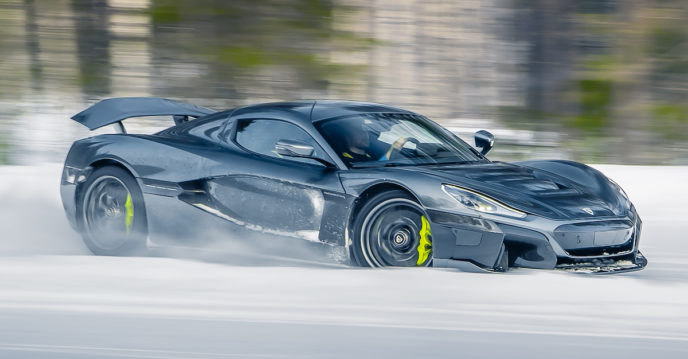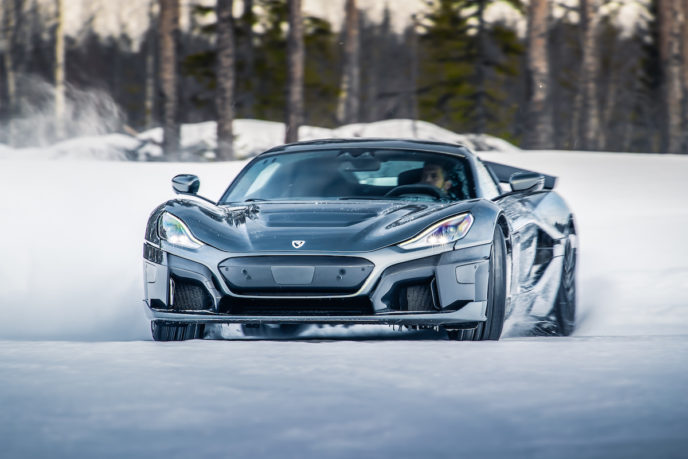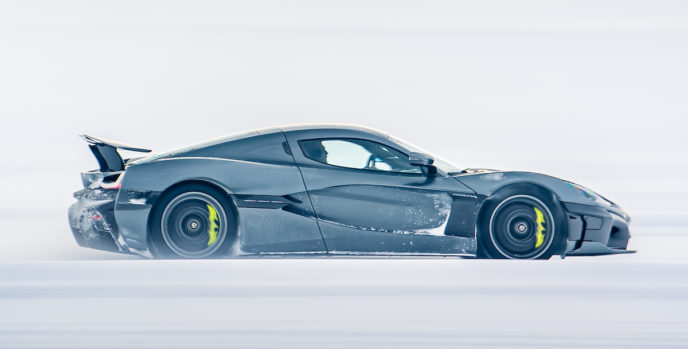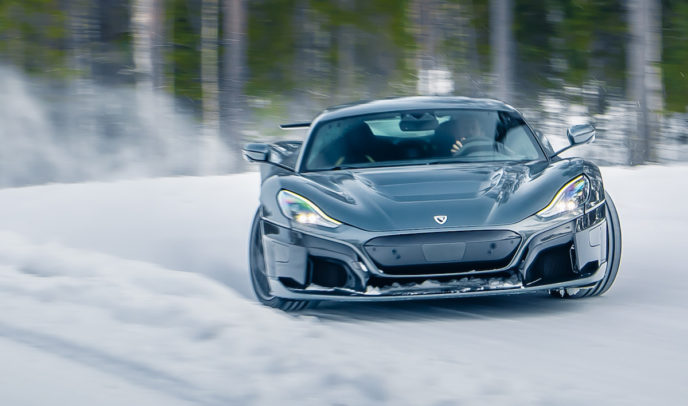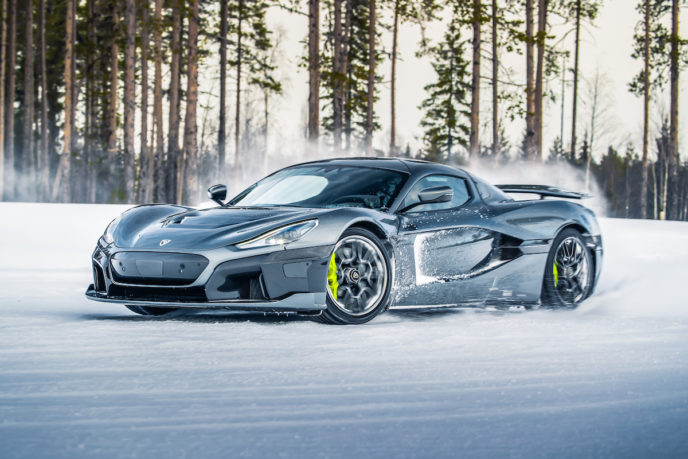The Rimac Nevera has completed two intensive weeks of winter testing at Pirelli’s Sottozero Centre near the Arctic Circle in Sweden. With daytime temperatures unusually warm, the Rimac team spent the time testing at night when temperatures were at their most extreme, fine-tuning systems like the ABS, ESP and torque-vectoring ahead of the delivery of the first production cars.
I see Nevera True Torque Vectoring is working as intended. That 360 degree spin at the 1 minute 50 second mark done with perfect control is something that a single engine ICE car can never do. But when you have an electric motor at each wheel, you can do stuff that ICE can only dream of. Now, you might say this is a cool party trick, but it might save life if you’re every stupid enough to drive a 1914 hp car on ice!
The Rimac Nevera has already passed USA and EU homologation tests and is due to be delivered to customers throughout the world within the next couple of months. But to ensure every control system functions perfectly in all conditions, the Rimac team headed to Sweden to validate results they had previously achieved on the road and in climatic chambers.
It also provided an ideal opportunity to test out the Nevera on its recommended winter tires – Pirelli P Zero Winter. The tire is distinguished by a specific marking on the sidewall that testifies to the joint development work carried out by Pirelli in partnership with Rimac. The Nevera’s standard ‘summer’ tires are Michelin Pilot Sport 4S.
Miroslav Zrncevic, Bugatti Rimac Chief Test and Development Driver, said: “Testing on a low grip surface like this allows us to make consistent and accurate observations on how our systems are performing in low temperatures. Things happen much more slowly than they would do on asphalt, and we have nice, even, smooth handling tracks so we know the data we get isn’t affected by surface imperfections or temperature swings. After these two weeks of testing, we’re happy to see exactly the results we wanted to achieve.”
Mate Rimac, CEO of the Rimac Group, said: “For us, this cold weather testing process was an opportunity to put the final 0.1% of polish on the Nevera, ensuring it’s perfect as soon as our owners begin to receive them in just a couple of months. Even after two weeks spent at temperatures of about -15°C (5°F), and a fairly demanding testing regime, our validation prototype performed at 100% throughout, so we know that all our core systems can perform reliably even in extreme conditions.
“What we also wanted to develop was a car that could be driven and enjoyed equally by someone who isn’t the most experienced driver right up to a seasoned racer. Finding that balance of creating a rewarding, but safe, drive in a 1,914hp car with four independent electric motors while also building a chassis that delivers delicate on-the-edge adjustability has been our goal from day one, and as our final stages of testing come to close, I can confidently say that’s exactly what we’ve achieved with Nevera.”
Designed, engineered, and built in-house at Rimac Automobili, the Nevera is limited to just 150 units. Made possible by its 120 kWh, 6960-cell battery delivering 1914 hp and 2360 Nm of torque, Nevera achieves a top speed of 258 mph (412 km/h), a 0-62 mph (100 km/h) time of 1.85 seconds, and a 0-100 mph (161 km/h) time of 4.3 seconds. It has been independently verified as the fastest accelerating production car in the world.

